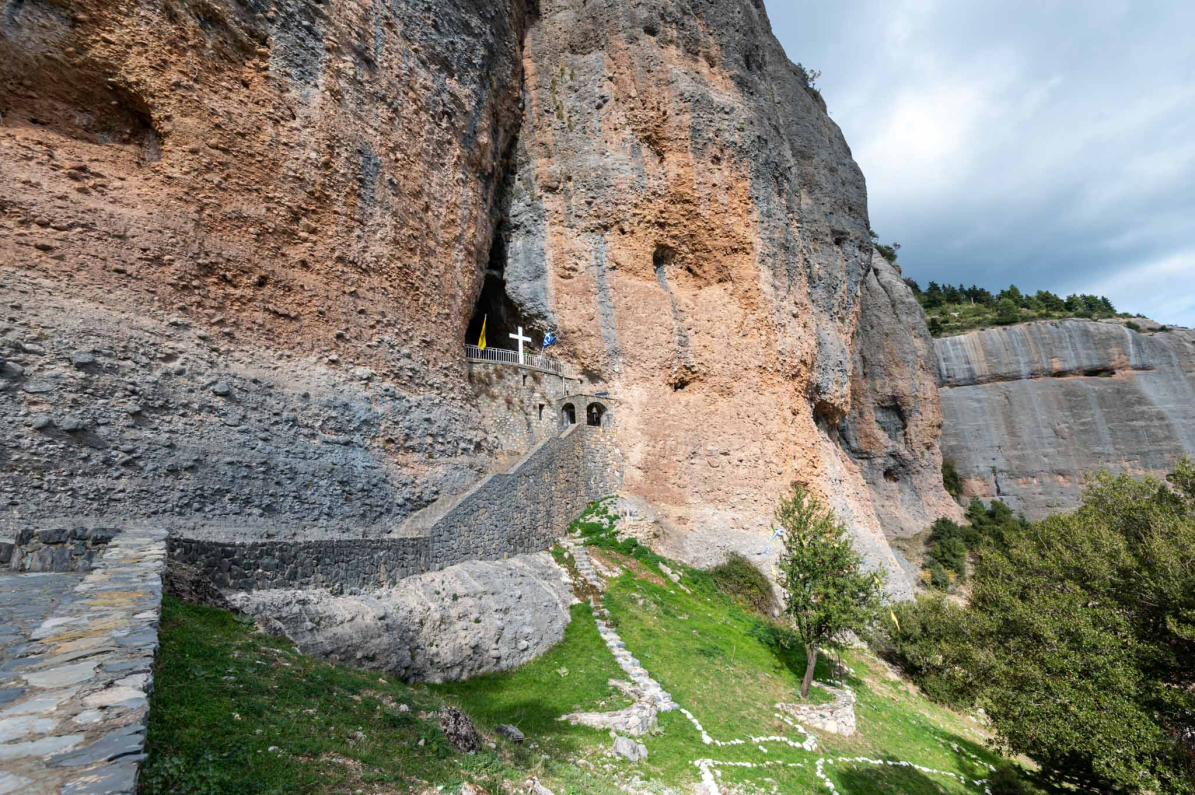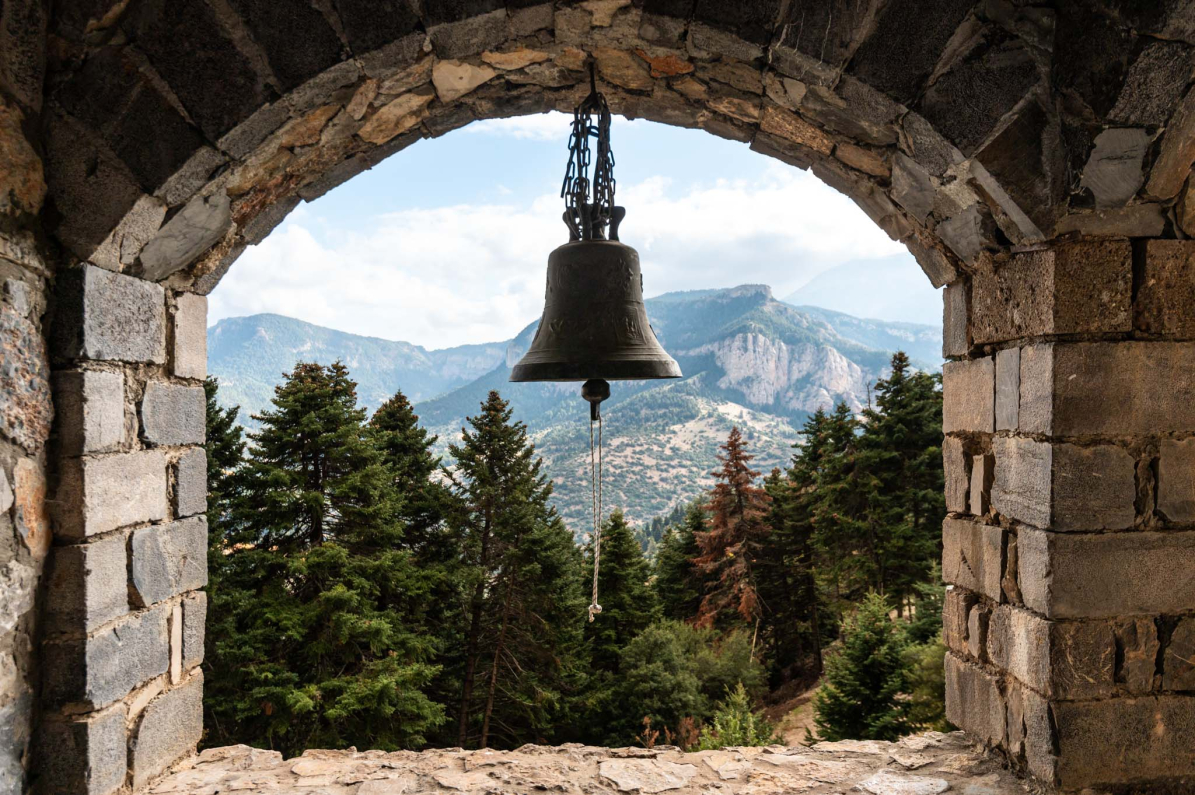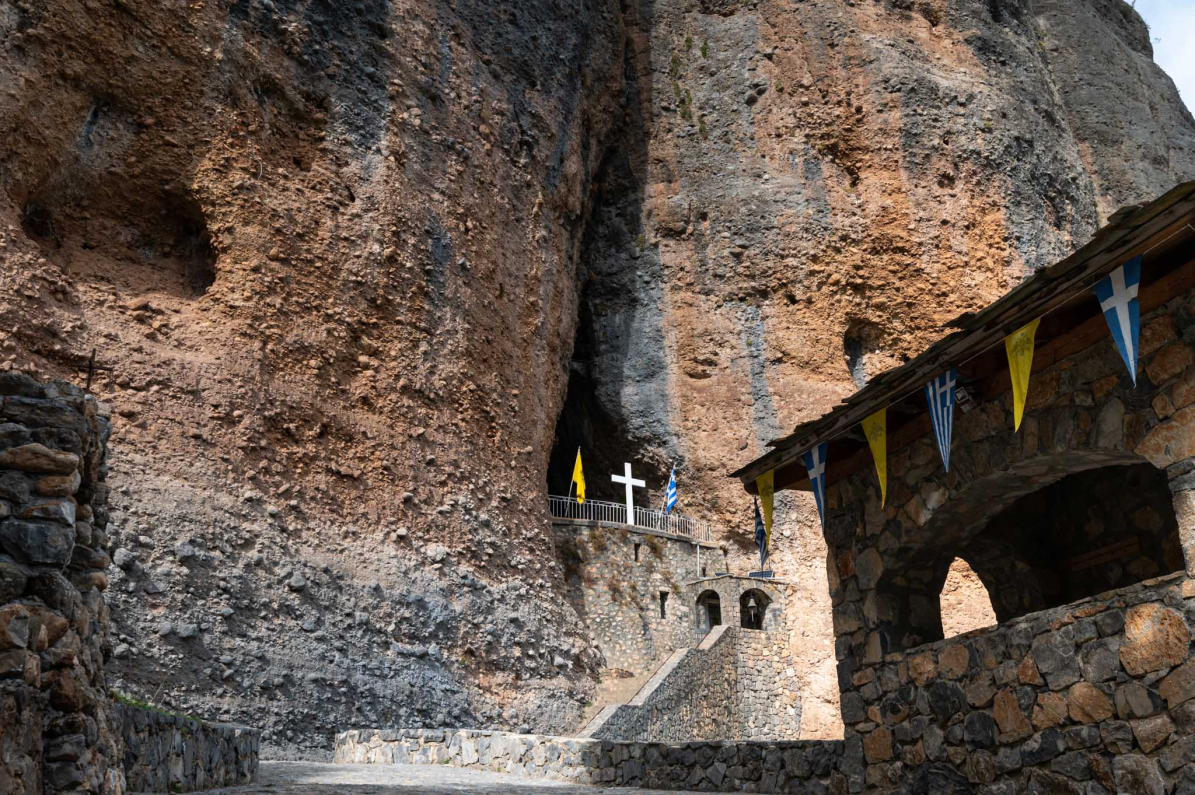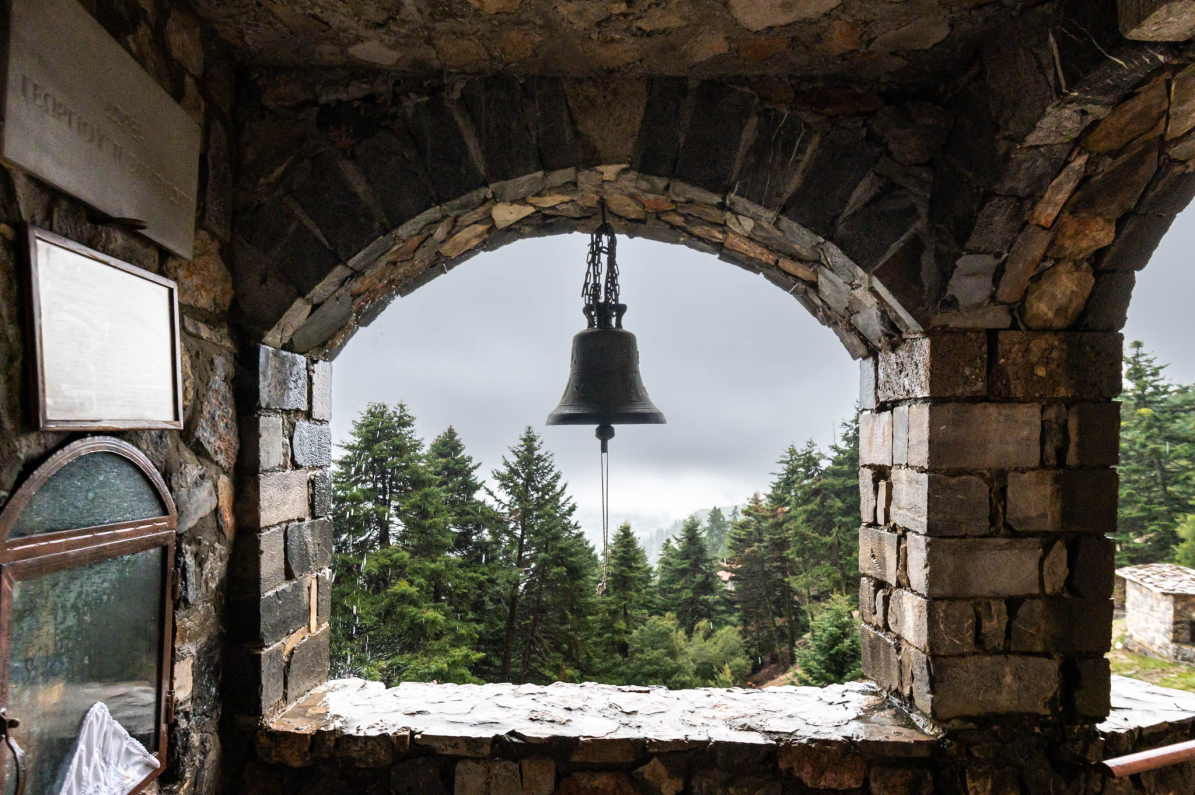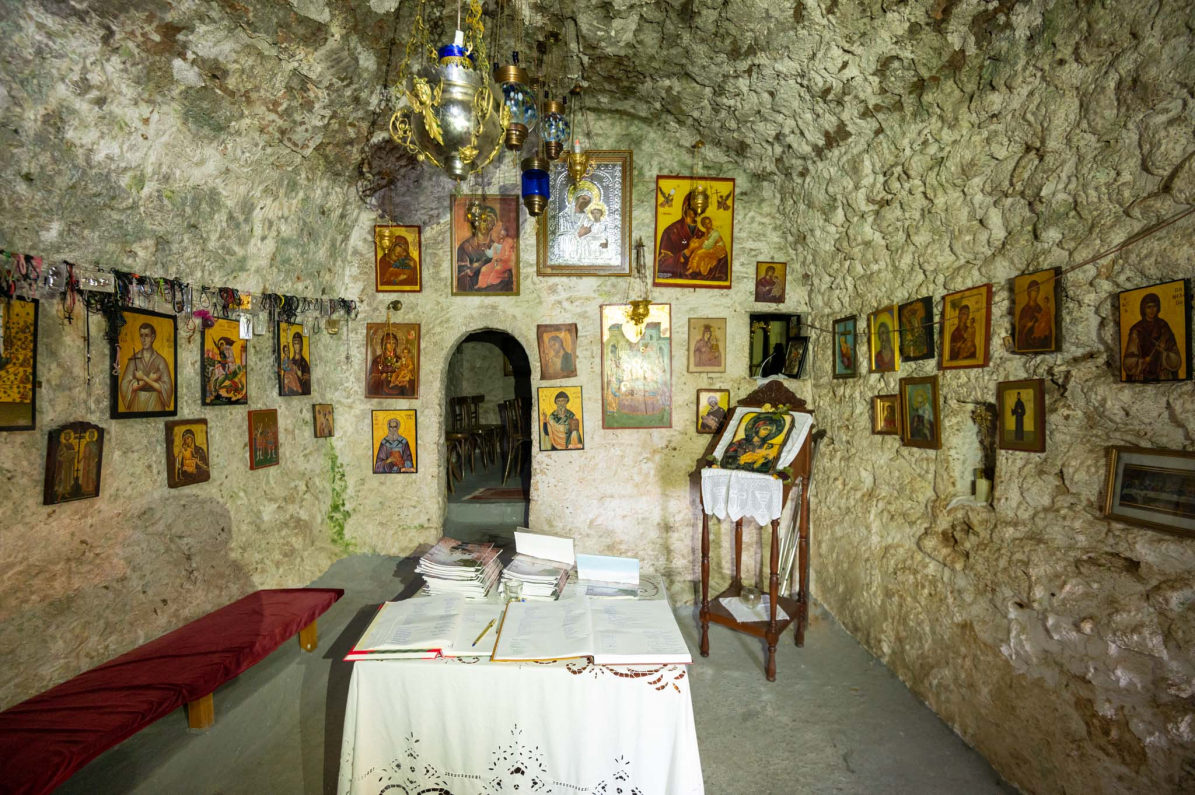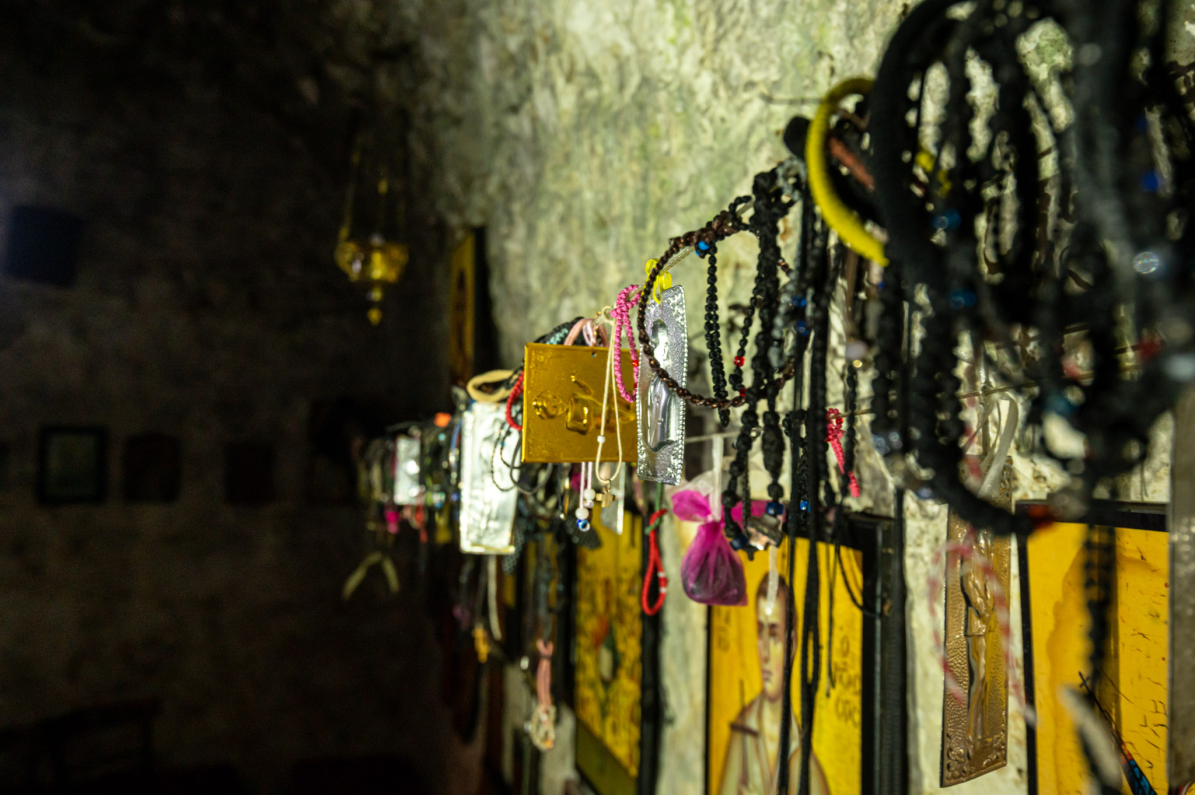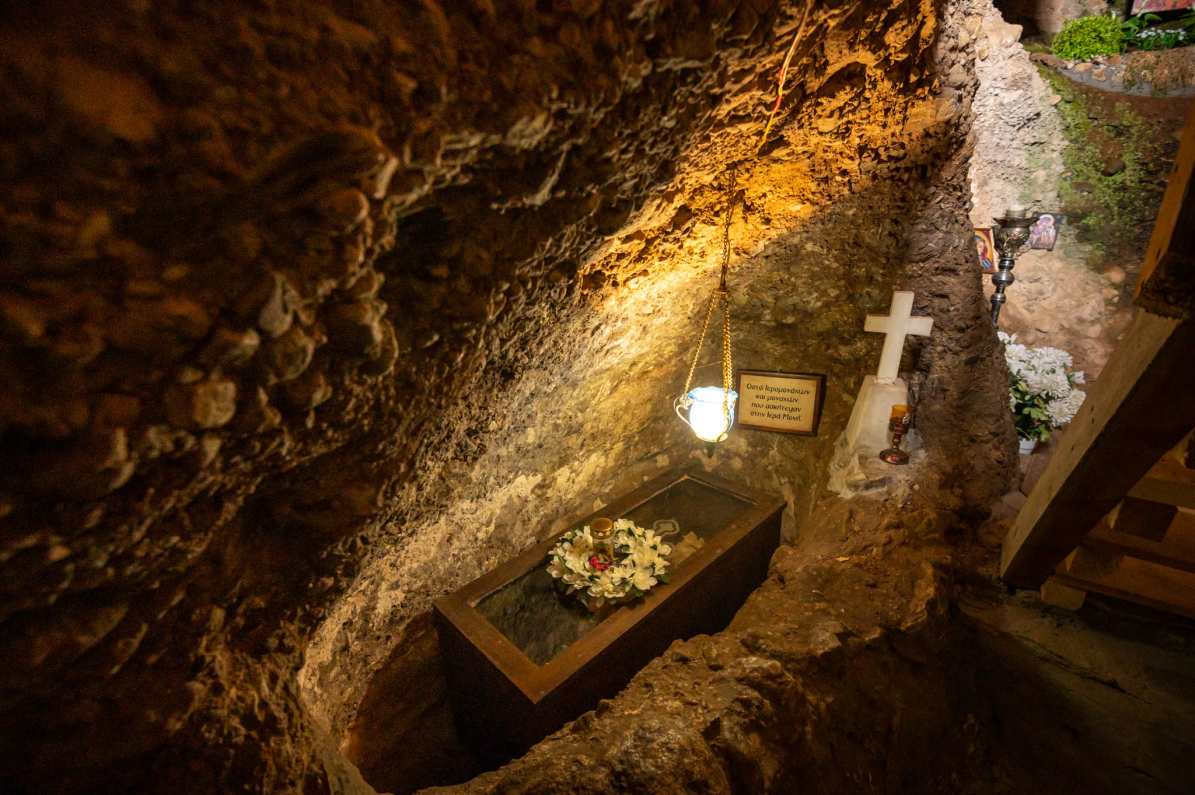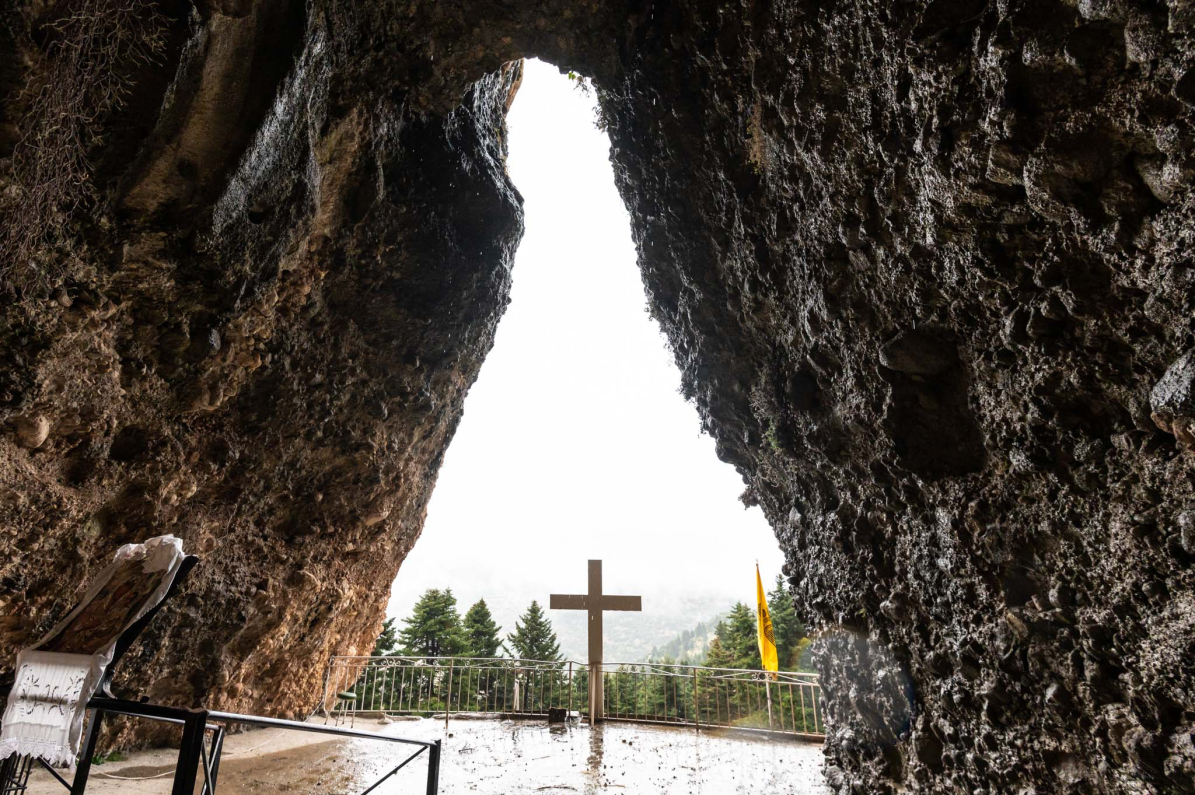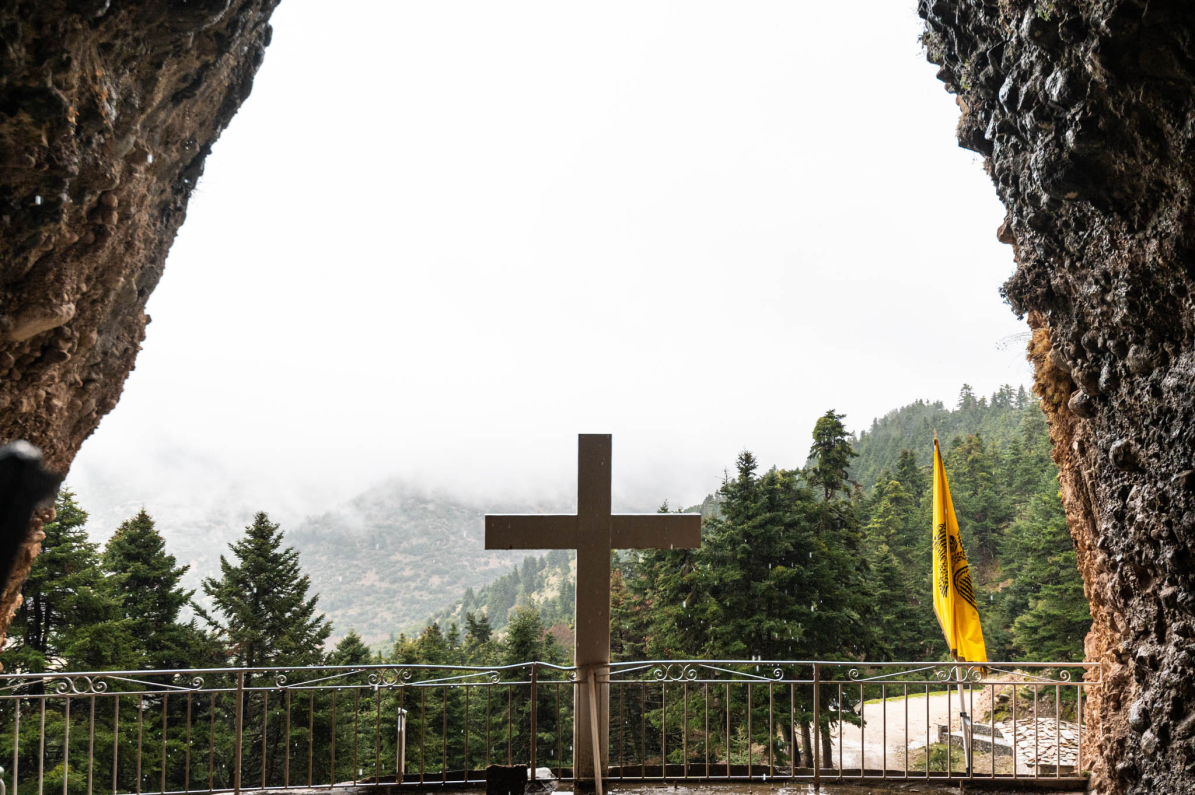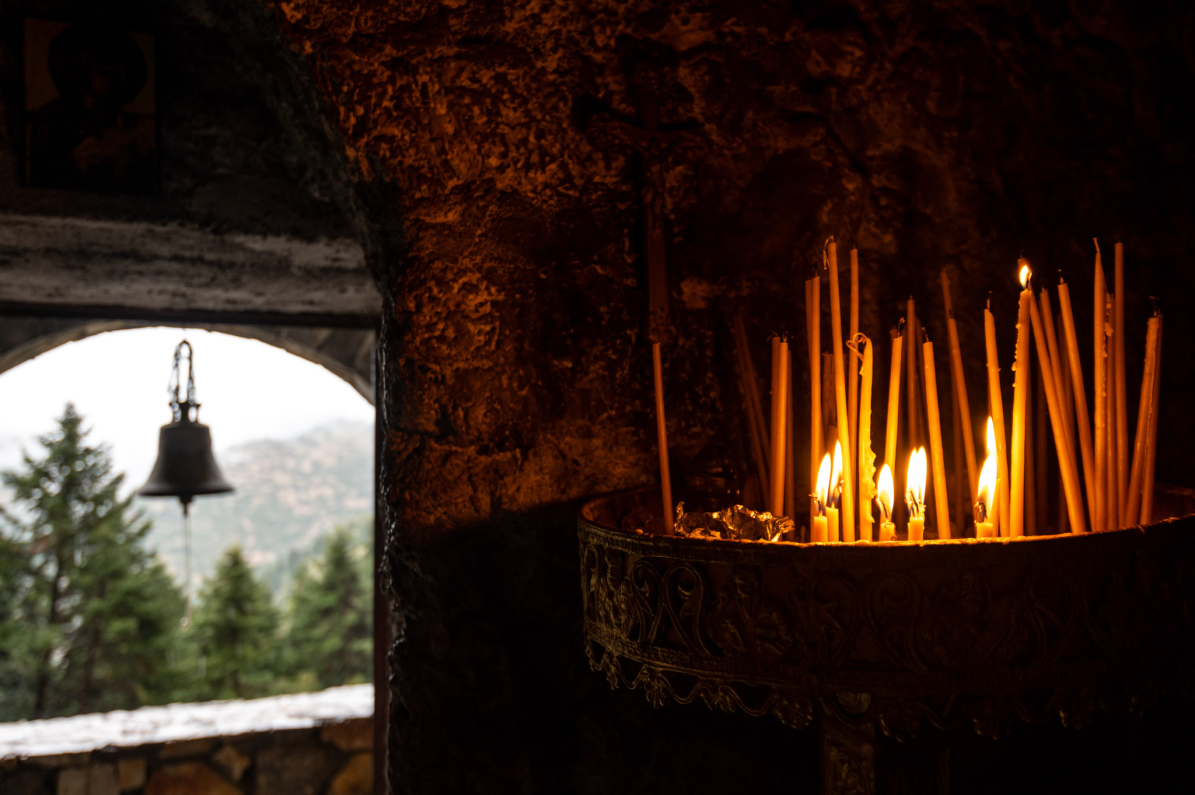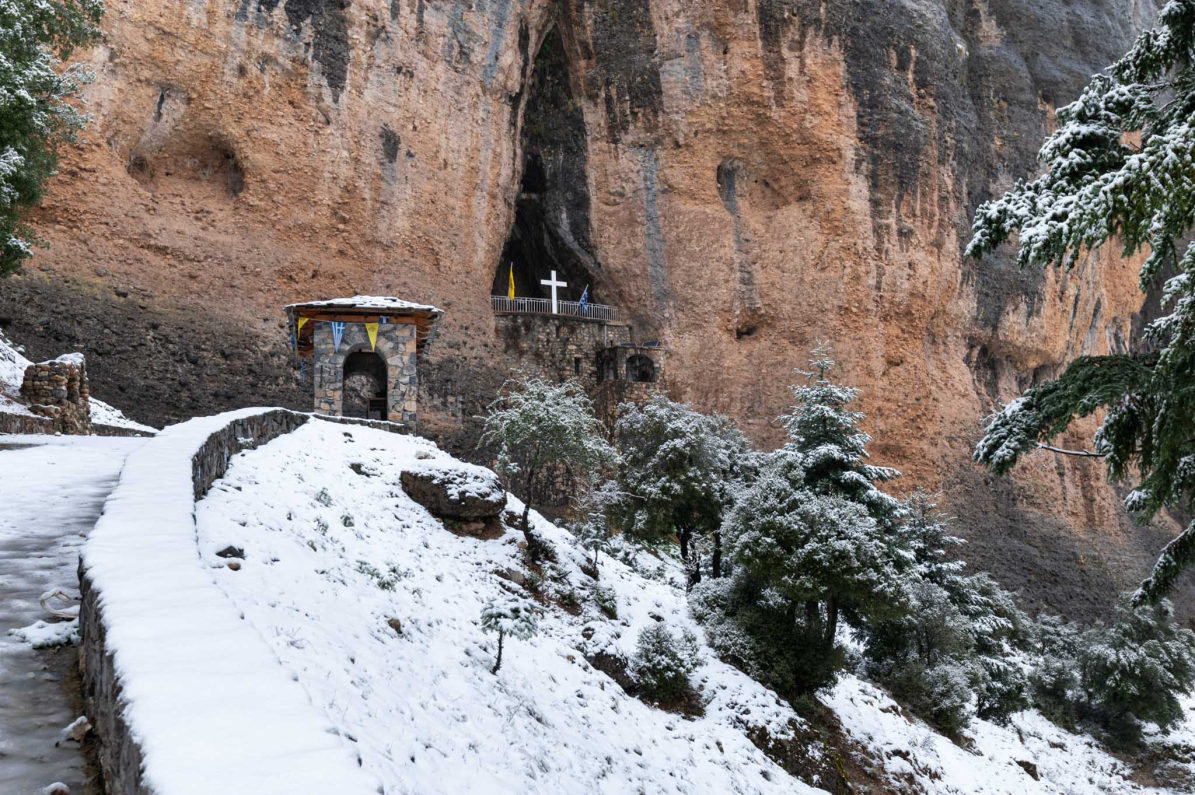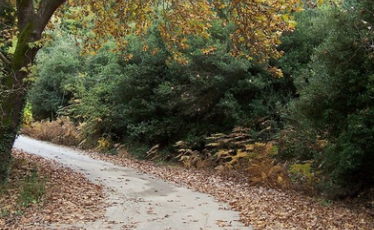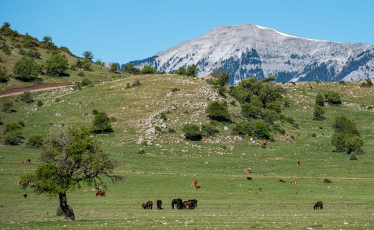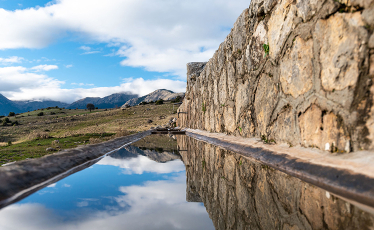Southwest of the village of Tarsos, clinging to the rocks like a hawk, stands the church of "Panagia of Vrachos" or, as it is more widely known, "Panagia of the Rock." According to local tradition, this church, which celebrates every year on August 23, was founded as a vow by a woman from Tarsos in Asia Minor, who was miraculously saved during the Turkish invasions of the 13th century and arrived as a refugee, alone and uprooted, in Feneo. This local legend likely hides historical truth, as the Tarsos of Feneo is believed to have been named after the resettlement of the inhabitants of Byzantine Tarsos during the turbulent years of Turkish expansionist wars.
Another tradition about the church's construction, also referring to historical events, takes us to the period after the fall of Constantinople to Mehmed the Conqueror. In May 1458, the conqueror of the Byzantine capital reached Corinth, which he besieged, and then turned to the interior of Corinthia with the aim of capturing the castle of Tarsos, which held a strategic geostrategic position. After unsuccessful attempts to breach the stronghold, Mehmed's armies realized that the secret lay in water, and by cutting off the supply, they forced the defenders to surrender. Many were killed, some were captured to be sold into slavery, and a few managed to escape. Some women were taken as slaves, while others jumped from the rock that is now the site of the Panagia church to avoid becoming slaves to the Turks. A young mother with her baby in her arms pleaded with all her strength for the conquerors to have mercy on the infant. However, the Turks were unmoved and threw her and the baby from the rock. Then, she called upon the help of Panagia, and miraculously, the woman was found at the base of the vertical rock, 100 meters below, safe and unharmed. Grateful for her salvation, the woman transformed the crack in the rock into a church.
Regardless of how the church was founded, the truth is that it is nestled in a landscape of exceptional natural beauty, in the shadow of rocks that are often referred to as the Meteora of Corinth. The cave that hosts the religious space is "two-story," with the church on the "lower" floor and a rudimentary storage space and shelter for difficult times on the "upper" floor. A stone, steep staircase leads to the three small, semicircular, tiered sections of the church. As visitors bend under the low doors, with a sense of reverence and awe, they reach the third main space of the church, where the altar is located in front of them. At the edge of the rock, water flows—cool and healing water, connected to the sanctity of the place.
The church is adorned with notable icons, including the majestic ones of Panagia and Christ, as well as the dedicatory icon of the Dormition of the Theotokos, all over 150 years old and works of the iconographer Asimakis Skaltsas. There is also a portable icon of the Virgin Mary holding the Child, over 200 years old, which is a unique piece of iconographic art, painted on a single carved wooden piece.
A visit to the small yet impressive church of Panagia of Vrachos offers the traveler unique emotions. The view of the Olvios River valley is breathtaking, and the deep, mystical natural and religious environment, intertwined with the long history of the place, provides an unforgettable and unparalleled life experience!
Admission:
It is open to the public. However, prior arrangement with the priest of the Tarsos parish is required.

